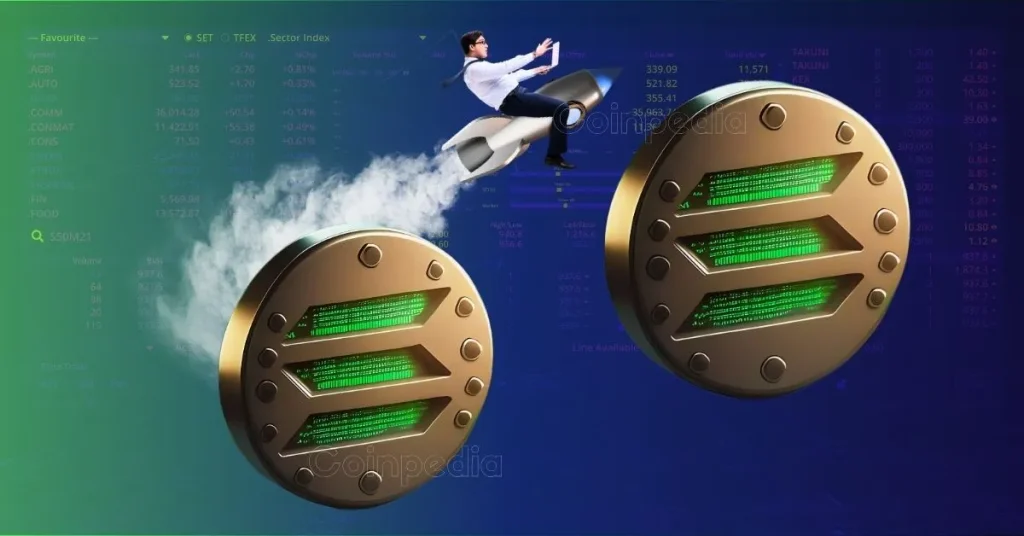ARTICLE AD BOX

- With mounting regulatory measures like the EU AI Act and SEC Climate Disclosure rules, VeChain’s enterprise-grade infrastructure is positioned to help NVIDIA meet AI environmental demands.
- VeChain ambassador Sebastian highlighted VeChain’s readiness to provide verifiable audit trails for ESG metrics, envisioning AI outputs with detailed carbon receipts verified on-chain.
With NVIDIA anchoring itself as a $2.5 trillion powerhouse fueling the AI explosion, and questions on the environmental and ethical price to pay for AI increasingly rippling into the mainstream. A post on X by Sebastian, a VeChain ambassador, spotlighted the potential of merging VeChain’s blockchain technology with NVIDIA. Thus, questions arose whether VeChain could really deliver the needed transparency to make NVIDIA’s AI dominance serve the current trajectory of global sustainability demands.
Expert Reveals How VeChain Could Benefit NVIDIA
Sebastian contends that VeChain’s infrastructure could act as a “trust layer” for NVIDIA’s vast AI ecosystem. This solves the issues around the narcotic emissions of AI computation that are kept from public knowledge.
He then highlighted the massive carbon footprint of AI models. Sebastian wrote, “AI is changing everything. Nvidia is leading it. But no one’s asking: What’s the real cost of intelligence?” He noted that training GPT-3 alone generated “552 metric tons of CO₂,” equivalent to “flying around Earth 60 times.”
With AI’s energy demands surging, Sebastian contends that VeChain’s blockchain can track critical metrics like “carbon per GPU” and “emissions per model.” Moreover, it could track the “origin of every rare metal” used in NVIDIA’s chips.
For context, NVIDIA’s GPUs power AI across industries, from OpenAI to Google and Meta, but the lack of a verifiable audit trail for their environmental impact is becoming a concern. Sebastian emphasized that VeChain’s Layer 1 blockchain is uniquely positioned to address this gap, as it is “built to score ESG [Environmental, Social, and Governance], track hardware, and tokenize climate behavior.” He envisions a future where AI outputs come with a “carbon receipt,” such as “This output emitted 0.003 kg of CO₂,” verified on-chain by VeChain.
AI Regulatory Compliance Measures Intensify
Furthermore, regulatory pressures are mounting. This includes initiatives like the EU AI Act, SEC Climate Disclosure rules, and Digital Product Passport requirements that are set to demand greater transparency. Here, Sebastian claims VeChain is already prepared. He described its infrastructure as “modular, compliant, and enterprise-grade.
He asserted, “When policy lands, VeChain doesn’t need to adapt. It’ll already be the standard.” This will make VeChain an ideal partner for NVIDIA to keep up with new ESG expectations from investors, regulators, and customers.
Sebastian’s vision also includes transparency to consumers. He asked the readers to imagine a scenario where a ChatGPT response includes details like “trained using hydro-powered compute,” verified by VeChain. “NVIDIA builds the chips. VeChain builds the trust layer,” he wrote. This suggests that VeChain could complement NVIDIA’s hardware dominance by ensuring accountability across the AI supply chain.
Therefore, the discussion led to questions on whether the AI’s environmental impact rising to prominence, blockchain-based solutions such as VeChain, may have become part of NVIDIA’s strategy. As Sebastian concluded, “The most important AI metric won’t be speed — it’ll be proof per token.”
.png)
 10 hours ago
1
10 hours ago
1








 English (US)
English (US)